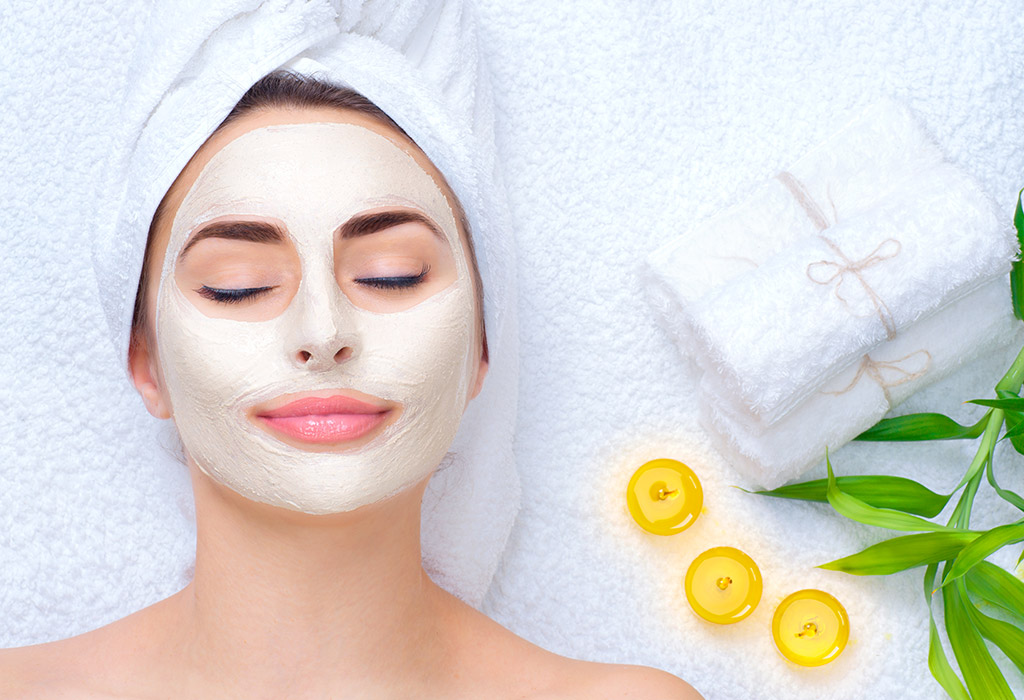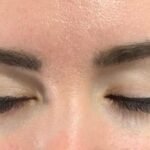This Site Is A Participant In The Amazon Services LLC Associates Program. We may earn money or products from Amazon or the companies mentioned in this post.
A professional facial should be obtained every 4 to 6 weeks for optimal skin health and maintenance. Regular professional facials are essential to maintain healthy and glowing skin.
They help to deeply cleanse, exfoliate, and nourish the skin, addressing specific concerns and improving overall skin texture and appearance. Professional facials also help to boost circulation, promote lymphatic drainage, and stimulate collagen production. Additionally, they can address skin issues such as acne, hyper-pigmentation, and aging signs.
By getting a professional facial every 4 to 6 weeks, you can ensure that your skin remains in its best condition and continue to enjoy the benefits of youthful and radiant skin.

Credit: facebodydayspa.com
Understanding The Benefits Of Professional Facials
Taking care of your skin is essential for maintaining a healthy and youthful appearance. While at-home skincare routines are important, sometimes you need the expertise and specialized treatments that only a professional facial can provide. Here, we will explore the various benefits of professional facials, how they can help with skincare concerns, and the importance of seeking professional expertise for achieving desired results.
The Skin Benefits Of Professional Facials
Professional facials offer numerous benefits for your skin, helping to enhance its overall health and appearance. Here are some key points to keep in mind:
- Deep cleansing: Professional facials involve a thorough cleansing of your skin, removing dirt, oil, and impurities that can clog your pores and lead to breakouts.
- Exfoliation: Facial exfoliation helps to remove dead skin cells, revealing fresh and radiant skin underneath. This process can improve skin texture and promote a brighter complexion.
- Hydration: Professional facials often include specialized hydrating masks and serums that deeply moisturize your skin, providing it with the vital hydration it needs for a healthy and plump appearance.
- Increased circulation: The massage techniques used during facials promote blood flow to the skin, improving circulation and giving your complexion a healthy and glowing look.
- Anti-aging benefits: Many professional facials use products and techniques that target signs of aging, such as fine lines and wrinkles. These treatments can help to stimulate collagen production, improving skin elasticity and firmness.
How Professional Facials Help With Skincare Concerns
Different individuals have unique skincare concerns, and professional facials can address these concerns effectively. Consider the following:
- Acne-prone skin: Professional facials can help manage acne by deep cleansing the skin, unclogging pores, and reducing inflammation. They may also include treatments with ingredients like salicylic acid or benzoyl peroxide, known for their acne-fighting properties.
- Hyperpigmentation: Facials that incorporate chemical peels or brightening agents can help lighten dark spots and even out skin tone. These treatments work by exfoliating the outer layer of skin and promoting the growth of new, healthier skin cells.
- Sensitivity and redness: Individuals with sensitive skin often benefit from facials that use gentle products and soothing techniques. These facials aim to calm irritation, reduce redness, and strengthen the skin’s barrier function.
- Dull complexion: Professional facials can rejuvenate dull and tired-looking skin by boosting hydration, improving circulation, and promoting cell turnover. The result is a brighter and more vibrant complexion.
The Importance Of Professional Expertise In Achieving Desired Results
While at-home skincare routines are essential, seeking professional expertise is crucial for addressing specific skin concerns and achieving desired results. Here’s why:
- Customized treatments: A professional esthetician can assess your skin type, understand your concerns, and tailor the facial treatment accordingly. This personalized approach ensures that you receive the most beneficial treatments for your unique needs.
- Targeted techniques and technology: Professional facials often incorporate advanced techniques and tools that aren’t readily available for at-home use. These methods can effectively target and address specific skin concerns, providing more noticeable and long-lasting results.
- Professional-grade products: Estheticians use professional-grade skincare products that are often formulated with higher concentrations of active ingredients. These products can penetrate deeper into the skin, offering enhanced benefits compared to over-the-counter alternatives.
- Expert advice: During your facial, an esthetician can provide valuable skincare advice, helping you understand your skin better and suggesting products and practices for maintaining its health in between professional treatments.
Professional facials offer a range of benefits for your skin, from deep cleansing and exfoliation to hydration and anti-aging effects. They can help with various skincare concerns, providing targeted treatments and expert advice. Remember, while at-home routines are vital, seeking professional expertise and treatments can help you achieve the best possible results for your skin.
So why not treat yourself to a professional facial every now and then and give your skin the care it deserves?
Factors To Consider For Frequency Of Professional Facials
Taking care of your skin is essential for maintaining a healthy and radiant complexion. While incorporating a regular skincare routine at home is important, professional facials can provide a deeper level of care and expertise. However, the frequency of getting a professional facial depends on several factors, including skin type and condition, age and hormonal changes, as well as lifestyle and environmental factors.
Let’s explore each of these factors in more detail:
Skin Type And Condition As Determining Factors
Determining how often you should get a professional facial largely depends on your skin type and its current condition. Here are the key points to consider:
- Dry or sensitive skin: If you have dry or sensitive skin, it’s best to opt for a gentle facial once every 4-6 weeks. This will allow your skin enough time to rejuvenate without causing irritation.
- Oily or acne-prone skin: Those with oily or acne-prone skin may benefit from more frequent facials, such as once every 2-4 weeks. Regular facials can help regulate sebum production and reduce the occurrence of breakouts.
- Combination skin: If you have combination skin, where some areas are oily and others are dry, scheduling a facial every 4-6 weeks can help strike a balance and address specific concerns accordingly.
- Normal or well-balanced skin: For those blessed with normal or well-balanced skin, getting a facial once every 6-8 weeks is generally sufficient to maintain its health and beauty.
Age And Hormonal Changes Affecting Facial Needs
As we age, the needs of our skin change, and hormonal fluctuations can also impact our facial requirements. Consider the following points:
- Younger age (teens to 30s): In younger age groups, where the skin is typically more resilient, scheduling a facial every 4-6 weeks can assist in preventing future skin issues and maintaining a youthful glow.
- Middle age (40s to 50s): As we enter middle age, collagen production decreases, and signs of aging become more apparent. To address these concerns effectively, having a facial once every 3-4 weeks can help combat fine lines, wrinkles, and sagging skin.
- Mature age (60s and beyond): With mature skin, it becomes even more crucial to deeply nourish and hydrate the skin. Aim for a facial every 2-3 weeks to support collagen synthesis, improve skin elasticity, and minimize age-related blemishes and dullness.
Lifestyle And Environmental Factors Impacting Skin Health
Apart from skin type and age, lifestyle and environmental factors play a significant role in determining the frequency of professional facials. Consider the following points:
- Exposure to environmental pollutants: If you live in a heavily polluted area or are frequently exposed to environmental toxins, more frequent facials (every 2-4 weeks) can help clear out impurities and restore your skin’s natural radiance.
- Career or lifestyle choices: Occupations or lifestyles that involve prolonged sun exposure, such as outdoor jobs or avid sunbathing, can lead to increased skin damage. In such cases, scheduling a facial every 2-3 weeks can provide the necessary repair and protection.
- Stress and sleep patterns: Chronic stress and inadequate sleep can take a toll on your skin’s health. If you lead a high-stress lifestyle or struggle with sleep, consider having a facial every 3-4 weeks to revitalize the skin and promote relaxation.
Remember, these guidelines are not set in stone, and it’s always beneficial to consult with a skincare professional who can assess your specific needs and recommend the ideal frequency of professional facials for you. By considering your skin type, age, and lifestyle factors, you can achieve a healthier, more vibrant complexion through regular and appropriate facial treatments.
Finding Your Personalized Facial Schedule
Regular facials can do wonders for your skin, leaving it refreshed, rejuvenated, and glowing. But how often should you actually get a professional facial? The answer depends on various factors, including your skin type, concerns, and lifestyle. To help you determine the right frequency for your personalized facial schedule, here are some key points to consider:
Consulting With A Skincare Professional
Before settling on a facial schedule, it’s essential to consult with a skincare professional who can evaluate your skin and provide expert advice. Here’s what you should discuss during your consultation:
- Skin type assessment: A skincare professional will examine your skin type, whether it’s dry, oily, combination, or sensitive. This evaluation helps in determining the specific needs of your skin.
- Skin concerns and goals: Talk about any specific skin concerns you have, such as acne, fine lines, hyperpigmentation, or dullness. Also, share your skincare goals, whether it’s achieving clearer skin, improving texture, or maintaining a youthful appearance.
- Lifestyle factors: Your skincare expert will consider your lifestyle factors, such as sun exposure, pollution levels, hormonal changes, and stress levels. These factors can influence the frequency and type of facials that are suitable for you.
Assessing Your Skin’S Needs And Goals
Once you’ve consulted with a skincare professional, it’s time to assess your skin’s needs and goals. Here are some important points to keep in mind:
- Skin condition: Evaluate the current condition of your skin. Is it in good shape or does it require special attention? Consider factors like dryness, oiliness, congestion, or sensitivity.
- Treatment intensity: Determine the level of intensity your skin can handle. Some facials involve more aggressive treatments, such as chemical peels or microdermabrasion, while others focus on gentle nourishment.
- Desired outcomes: Clearly define what you hope to achieve with your facials. Whether it’s addressing specific issues or maintaining overall skin health, understanding your desired outcomes helps in creating an effective facial schedule.
Creating A Customized Facial Plan
Now that you have all the necessary information, it’s time to create a customized facial plan tailored to your skin’s needs. Here’s what you should consider:
- Frequency: Based on your skin type, concerns, and goals, the skincare professional will recommend an ideal frequency for your facials. This could range from monthly sessions to quarterly treatments, or even bi-weekly visits for more intensive skin transformations.
- Combination treatments: Discuss whether combining different facial treatments, such as microdermabrasion, chemical peels, or led therapy, would be beneficial for your skin. Combination treatments can often provide enhanced results.
- At-home skincare routine: Alongside professional facials, it’s crucial to establish a consistent at-home skincare routine. Your skincare professional can guide you on the right products and techniques to complement and maintain the results of your facials.
Remember, regularly reassessing your skin’s needs and adjusting your facial schedule accordingly is crucial. Your personalized facial plan may evolve over time as your skin changes and adapts to different seasons, environmental factors, or lifestyle adjustments. Prioritizing professional skincare guidance, along with consistent self-care, will help you achieve and maintain healthy, glowing skin.
Establishing A Baseline Routine
Taking care of your skin is an essential part of maintaining a healthy complexion. While professional facials offer a myriad of benefits, establishing a baseline routine is equally important in achieving long-term skin health. By incorporating basic skincare practices and maintaining a consistent regimen, you can optimize the results of your professional treatments.
Here’s a breakdown of how to establish a baseline routine for healthy skin:
Basic Skincare Practices To Follow Between Professional Facials:
- Cleansing: Wash your face twice daily with a gentle cleanser to remove dirt, oil, and impurities.
- Exfoliation: Gently exfoliate your skin once or twice a week to slough off dead skin cells and promote cell turnover.
- Moisturizing: Hydrate your skin with a suitable moisturizer to maintain its natural moisture barrier.
- Sun protection: Apply sunscreen with at least spf 30 daily to shield your skin from harmful uv rays.
- Eye care: Use an eye cream to address specific concerns like fine lines, puffiness, or dark circles.
- Nutrition and hydration: Maintain a well-balanced diet and drink plenty of water to nourish and hydrate your skin from within.
Maintaining A Healthy Skincare Regimen:
- Consistency is key: Stick to your skincare routine diligently for optimal results.
- Customization: Tailor your routine to address your specific skin concerns and type.
- Avoid harsh ingredients: Stay away from products containing irritants or allergens that can harm your skin.
- Patch testing: Before introducing new products into your routine, perform a patch test on a small area of your skin to check for any adverse reactions.
- Regular review: Periodically reassess your skincare routine to ensure it continues to meet your skin’s changing needs.
Incorporating Professional Treatments As Needed:
- Frequency: The frequency of professional facials depends on your skin type, concerns, and goals. Discuss with your esthetician to determine the ideal interval between treatments.
- Customization: Professional facials can be personalized to target specific skin issues like acne, aging, or hyperpigmentation.
- Enhancing results: Regular professional treatments can enhance the efficacy of your at-home skincare routine.
- Professional advice: Seek guidance from a licensed esthetician who can recommend suitable treatments and provide expert advice on maintaining your skin’s health.
By following these practices and incorporating professional treatments as needed, you can establish a baseline skincare routine that supports the overall health and appearance of your skin. Remember, consistency and customization are key to achieving the best results. So, let’s embark on your journey towards radiant and healthy skin!
Frequency Guidelines For Various Skin Types
Recommended Frequency For Normal Skin
For those lucky individuals with normal skin, getting a professional facial can help maintain that healthy glow. Here are some guidelines to keep in mind:
- It is generally recommended to get a professional facial once every 4-6 weeks.
- This regular interval allows your skin to benefit from the deep cleansing, exfoliation, and nourishment provided by a professional esthetician.
- By sticking to this recommended frequency, you can keep your skin looking its best and help prevent any potential issues from arising.
Adjusting For Dry Or Dehydrated Skin
If you have dry or dehydrated skin, it’s essential to adapt your facial frequency to meet your skin’s specific needs. Consider the following recommendations:
- For dry skin, it is recommended to get a professional facial every 3-4 weeks. This more frequent schedule allows for extra hydration and moisturizing tailored to combat dryness.
- Dehydrated skin may benefit from a similar frequency of every 3-4 weeks. This allows for regular replenishment of moisture to help restore the skin’s natural hydration levels.
Remember, consistency is key when it comes to addressing dry or dehydrated skin. Stick to your chosen frequency to maintain long-term results.
Managing Oily Or Acne-Prone Skin
If you struggle with oily or acne-prone skin, regular professional facials can be especially beneficial. Here’s what you should know about frequency guidelines for oily or acne-prone skin:
- It is recommended to get a professional facial every 2-3 weeks if you have oily or acne-prone skin. This more frequent schedule allows for deep cleansing, extraction of impurities, and balancing of oil production.
- Regular facials can help keep pores clear, reduce the occurrence of breakouts, and promote a healthier complexion.
By following this recommended frequency, you can stay on top of managing oily or acne-prone skin effectively.
Addressing Sensitive Or Reactive Skin
If you have sensitive or reactive skin, finding the right balance in your facial frequency is crucial. Take note of the following guidelines:
- For those with sensitive or reactive skin, it is generally recommended to get a professional facial every 4-6 weeks.
- This less frequent schedule allows for gentle treatments and avoids overstimulation that may trigger reactions.
- Ensure that the esthetician is experienced in handling sensitive skin and uses products that are suitable for your specific skin concerns.
By following these guidelines, you can effectively address sensitive or reactive skin without causing undue irritation or discomfort.
Remember, these frequency guidelines are just a starting point. It’s essential to consult with a professional esthetician who can assess your skin’s unique needs and recommend a personalized facial schedule. By maintaining regular professional facials, you can give your skin the care it deserves and enjoy a radiant complexion.
Considering Additional Factors
Seasonal Changes And Their Impact On Skin
Seasonal changes can have a significant impact on the condition of your skin. Factors such as humidity, temperature, and exposure to sunlight can affect its overall health and appearance. Here are some key points to consider when deciding how often to get a professional facial:
- Dry winter months: Cold weather can cause dryness and dehydration, leading to flaky and dull-looking skin. In these months, it is recommended to have a professional facial every 4-6 weeks to hydrate your skin and replenish its moisture levels.
- Hot and humid summers: Excessive heat and humidity can trigger excess oil production, clogged pores, and breakouts. It is advisable to get a facial every 4 weeks during these months to control oiliness, unclog pores, and maintain a clear complexion.
- Transition seasons: Spring and fall are transitional seasons with fluctuating temperatures and changing environmental conditions. Your skin may experience imbalances during these times, so scheduling a professional facial every 6-8 weeks can help restore balance and address any specific skin concerns.
Special Occasions And Their Influence On Facial Frequency
Special occasions, such as weddings, parties, or important events, often call for radiant and flawless skin. Here are a few key points to consider in terms of facial frequency:
- Pre-event facials: If you have a special occasion coming up, getting a professional facial 1-2 weeks before the event can help enhance your skin’s appearance. These facials often focus on exfoliation, hydration, and brightening treatments to give you that extra glow.
- Monthly maintenance: Even when you don’t have a particular event in mind, getting a monthly facial can help maintain the overall health of your skin. Regular treatments can prevent common skin issues, improve texture, and promote a youthful complexion.
Modifying The Routine Based On Changes In Skin Condition
Your skin condition can change due to a variety of factors, such as hormonal fluctuations, stress, diet, or lifestyle changes. It is essential to adapt your facial routine accordingly. Consider the following points:
- Oily or acne-prone skin: If you have oily or acne-prone skin, you may benefit from more frequent professional facials, approximately every 2-3 weeks. These treatments can help regulate oil production, clear clogged pores, and reduce breakouts.
- Sensitive or reactive skin: For those with sensitive or reactive skin, less frequent facials are recommended to avoid overstimulation. Aim for a professional facial every 6-8 weeks, focusing on gentle and soothing treatments that cater to your skin’s specific needs.
- Age-related concerns: As we age, our skin may require extra care to address fine lines, wrinkles, and loss of elasticity. It is advisable to schedule professional facials every 4-6 weeks to target these concerns and promote a more youthful complexion.
Remember, these recommendations are general guidelines, and it is essential to consult with a skincare professional to determine the ideal frequency for your specific skin type and condition. By considering seasonal changes, special occasions, and modifying your routine based on changes in skin condition, you can ensure that you receive the appropriate number of professional facials to maintain a healthy and glowing complexion.
Signs That It’S Time For Your Next Facial
Your skin goes through changes constantly, and getting regular professional facials can address these changes effectively. But how do you know when it’s time to schedule your next facial appointment? Pay attention to these physical signs indicating the need for a professional facial:
- Changes in skin texture, clarity, or tone: If you notice rough patches, uneven skin tone, or a dull complexion, it may be a sign that your skin needs some extra care. A professional facial can help to exfoliate dead skin cells, promote cell turnover, and reveal a brighter and smoother complexion.
- Increased breakouts or congestion: Breakouts and clogged pores can be frustrating, especially if you’ve been following a consistent skincare routine. If you’re experiencing more frequent breakouts or notice congestion in your pores, a professional facial can deep clean your skin and help to clear out impurities.
- Excessive dryness or dehydration: Is your skin feeling tight, flaky, or lacking moisture? Harsh weather, central heating, and certain skincare products can contribute to dryness and dehydration. A moisturizing facial can replenish your skin’s hydration levels and restore its natural balance.
- Persistent redness or sensitivity: Persistent redness or sensitivity could be a sign of underlying skin conditions such as rosacea or inflammation. A professional facial with gentle, soothing ingredients can help to calm and nourish your skin, reducing redness and inflammation.
- Fine lines and wrinkles becoming more visible: As we age, fine lines and wrinkles become more prominent. If you’re noticing an increase in the appearance of fine lines and wrinkles, a facial with anti-aging benefits, such as collagen stimulation or hyaluronic acid infusion, can help to smooth and plump your skin.
- Sun damage or hyperpigmentation: Exposure to the sun’s harmful uv rays can lead to sun damage and hyperpigmentation, causing dark spots and uneven skin tone. Professional facials with ingredients like vitamin c or chemical peels can help to fade discoloration, brighten your complexion, and reduce the signs of sun damage.
Remember, everyone’s skin is unique, and the frequency of professional facials may vary depending on your skin type, concerns, and lifestyle factors. It’s best to consult with a skincare professional who can assess your skin’s condition and recommend an appropriate facial schedule for optimal results.
Don’t forget to listen to your skin’s signals for rejuvenation and give it the care it deserves.
Maintaining Long-Term Skin Health
Skincare routines are essential for maintaining healthy and radiant skin. While daily cleansing, moisturizing, and protecting your skin are crucial, incorporating professional facials into your skincare regimen can take your skin health to the next level. Here’s a guide to help you understand how often you should get a professional facial to maintain long-term skin health.
Following A Consistent Skincare Routine
To keep your skin in optimal condition, it’s important to establish a consistent skincare routine. This should include daily cleansing, moisturizing, and using sunscreen. Here are the key points to consider:
- Cleanse your skin twice a day, in the morning and evening, to remove dirt, oil, and impurities.
- Moisturize your skin daily to keep it hydrated and maintain its natural barrier.
- Protect your skin from harmful uv rays by applying sunscreen with at least spf 30 every day.
- Use products suitable for your skin type and concerns to address specific issues.
Regular Check-Ins With Your Skincare Professional
While a daily skincare routine is essential, consulting with a skincare professional can provide personalized recommendations and treatments. Here are the key points to keep in mind:
- Schedule regular check-ins with your skincare professional to assess your skin’s condition and address any concerns.
- Skincare professionals have a deep understanding of different skin types and can recommend suitable treatments and products.
- They can perform thorough skin analyses, identifying underlying issues that may not be apparent to the naked eye.
- Your skincare professional can tailor facials to your specific needs, targeting concerns such as acne, aging, hyperpigmentation, or sensitivity.
Adjusting Your Facial Schedule As Needed For Optimal Results
The frequency of professional facials depends on your skin’s needs and concerns. While some individuals may benefit from monthly facials, others may require more frequent treatments. Here are the key points to consider:
- Discuss your skincare goals with your skincare professional, who can suggest an appropriate facial schedule.
- Factors such as skin type, age, lifestyle, and environment can influence how often you should get a facial.
- If you have specific skincare concerns or are undergoing a treatment plan, your skincare professional may recommend more frequent facials.
- Monitor your skin’s response to facials and adjust the frequency accordingly to maintain optimal results.
Remember, maintaining long-term skin health requires a combination of a consistent daily skincare routine and periodic professional facials. By following these guidelines and working closely with your skincare professional, you can achieve radiant and healthy skin that reflects your unique beauty.
Frequently Asked Questions Of How Often Should You Get A Professional Facial?
How Often Should You Get A Professional Facial?
It is recommended to get a professional facial once a month. This allows for the skin to properly rejuvenate and address any specific concerns or issues. However, the frequency may vary depending on individual needs and skin conditions. Regular facials can promote healthier and clearer skin.
Conclusion
Determining how often to get a professional facial depends on various factors such as your skin type, concerns, and budget. Regular facials can help improve the overall health and appearance of your skin by addressing specific issues like acne, dryness, or aging signs.
For individuals with specific skin concerns or conditions, it may be beneficial to schedule monthly or bi-monthly sessions to maintain optimal results. On the other hand, those with less specific concerns may choose to have facials done every three to four months.
However, it’s important to listen to your skin and consult with a licensed esthetician who can assess your unique needs and recommend an appropriate frequency. Remember, consistency is key when it comes to achieving and maintaining healthy, glowing skin. So, don’t hesitate to pamper yourself and invest in professional facials to rejuvenate and revitalize your skin.






